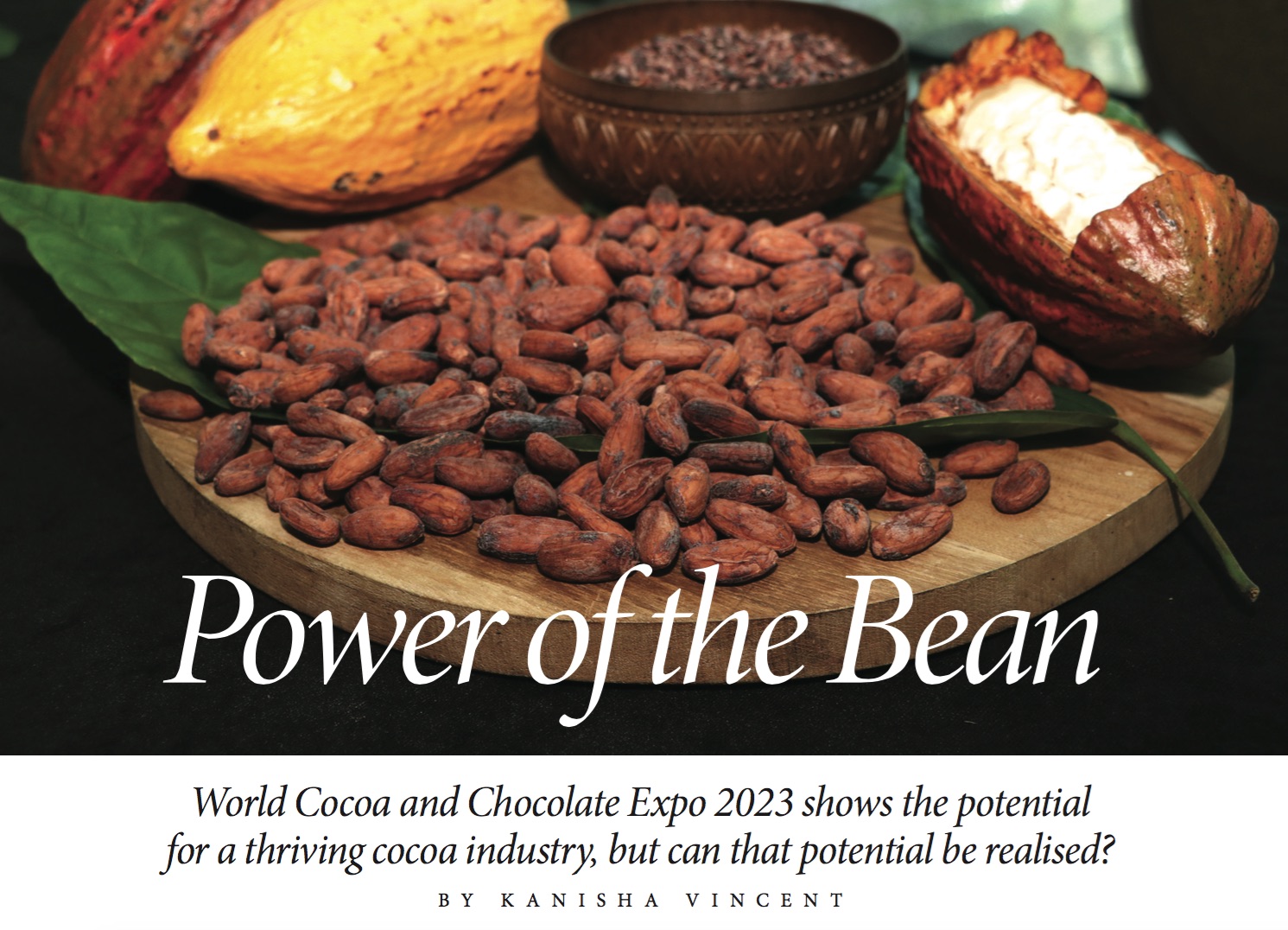
Stepping into the Mahatma Gandhi Institute for Cultural Cooperation in Mt Hope, the smell of cocoa and its byproducts is a sensory delight. The sweet, nutty, and fruity notes are luxurious. The space is chocked full of booths displaying various products, swarmed by attendees within minutes of opening. This is the World Cocoa and Chocolate Expo (WCCD) hosted by the Cocoa Research Centre (CRC) at UWI St Augustine.
Standing at the apex of cocoa quality, Trinidad and Tobago boasts cocoa beans that are the most sought after and most expensive worldwide. Local chocolatier Noreen Nunez, who has over 15 years in the chocolate making business at several chocolate hot spots around the world, introduces me to our magnificent cocoa bean. In explaining the structure of the cocoa market, Professor Pathmanathan Umaharan, Director of the CRC, elaborates by differentiating between the bulk cocoa market, which is approximately 90 percent of the world's cocoa, and the fine flavour market, which makes up the remaining 10 percent.
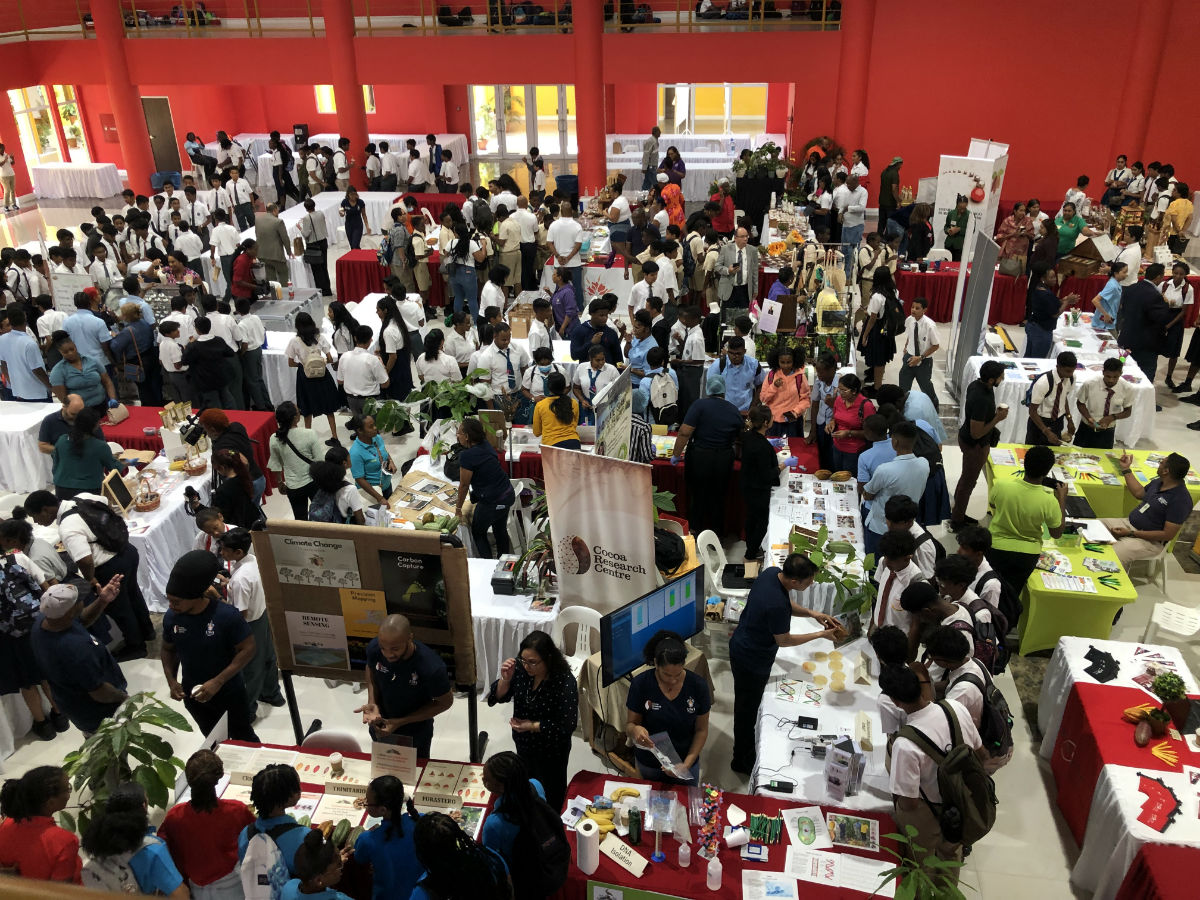
PHOTOS: COURTESY THE COCOA RESEARCH CENTRE
Prof Umaharan – who was recently awarded the nation’s highest honour, the Order of the Republic of Trinidad and Tobago, for his service in the spheres of science and agricultural development – states that “even within that fine flavour sector, we are right at the top”.
As the originator of the famous fine flavour Trinitario strain of cocoa plant, our growing environment and the quality of the cocoa bean (which can fetch up to US$9,000 per tonne, we are at a comparative advantage. According to writer and research fellow at the CRC Francis Bekele (2019), “Being the ‘cradle’ of Trinitario cacao and cocoa is a very laudable distinction for the twin-island republic of Trinidad and Tobago.”
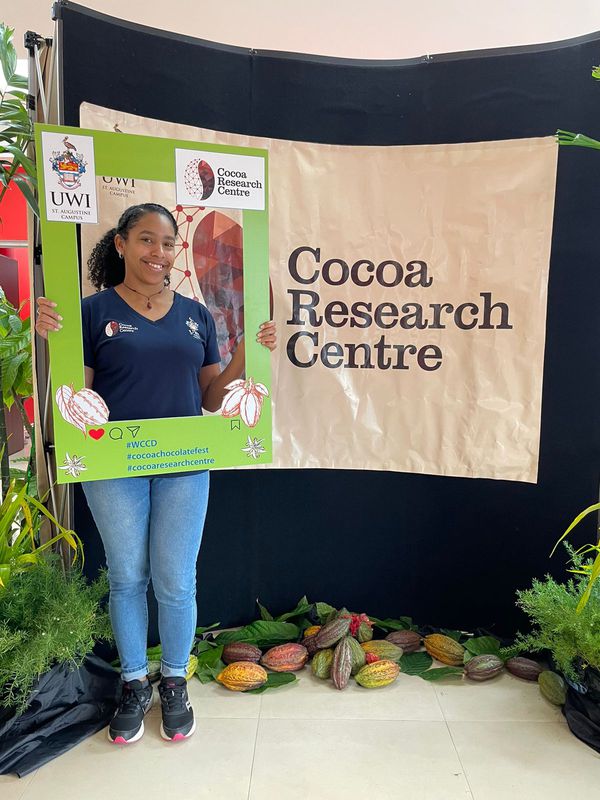
The organisers of WCCD recognise this. The event, which started in 2010 as a training opportunity for local chocolatiers, quickly expanded in size and purpose. As it moved from the JFK Auditorium to UWI SPEC to the Hyatt Regency Trinidad and most recently the Mahatma Gandhi Institute, so has it continued to grow. With this year’s theme being ‘Experience the Triple Helix’, the government, the university, and the private sector came together in their collective desire to create a new molecule of life in the cocoa industry.
That spirit of partnership was well-represented at booths belonging to ExporTT (also a bronze sponsor the event) and the Trinidad and Tobago Bureau of Standards, the International Fine Cocoa Innovation Centre (IFCIC), farmers, chocolatiers, and the National Flour Mills Limited (the event’s gold sponsor), just to name a few. Even the venue itself reflected that spirit of partnership. The Mahatma Gandhi Institute for Cultural Cooperation provided their facilities and other services free of charge for the expo.
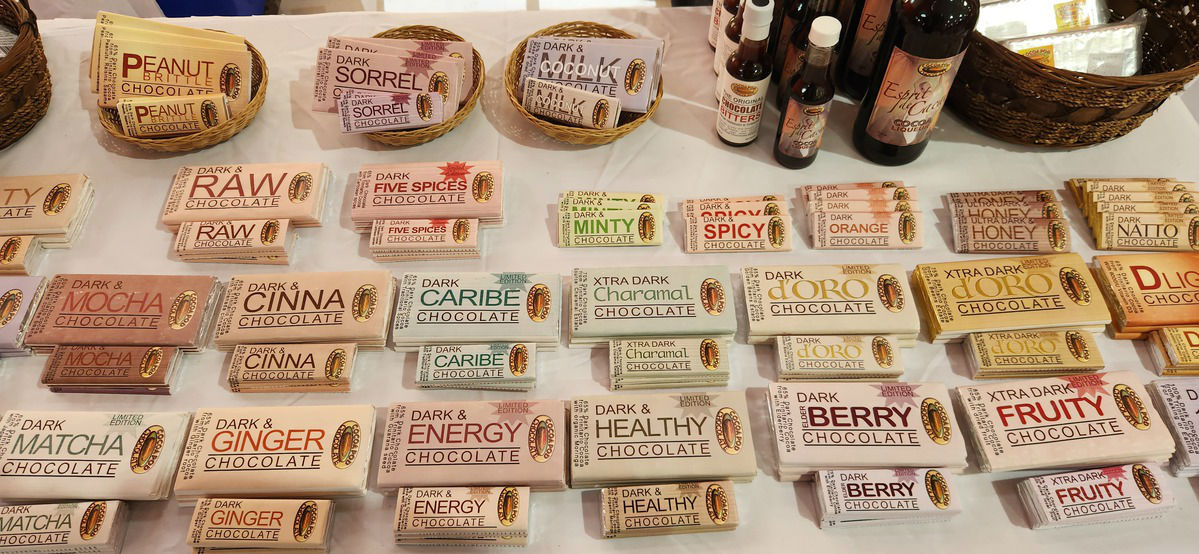
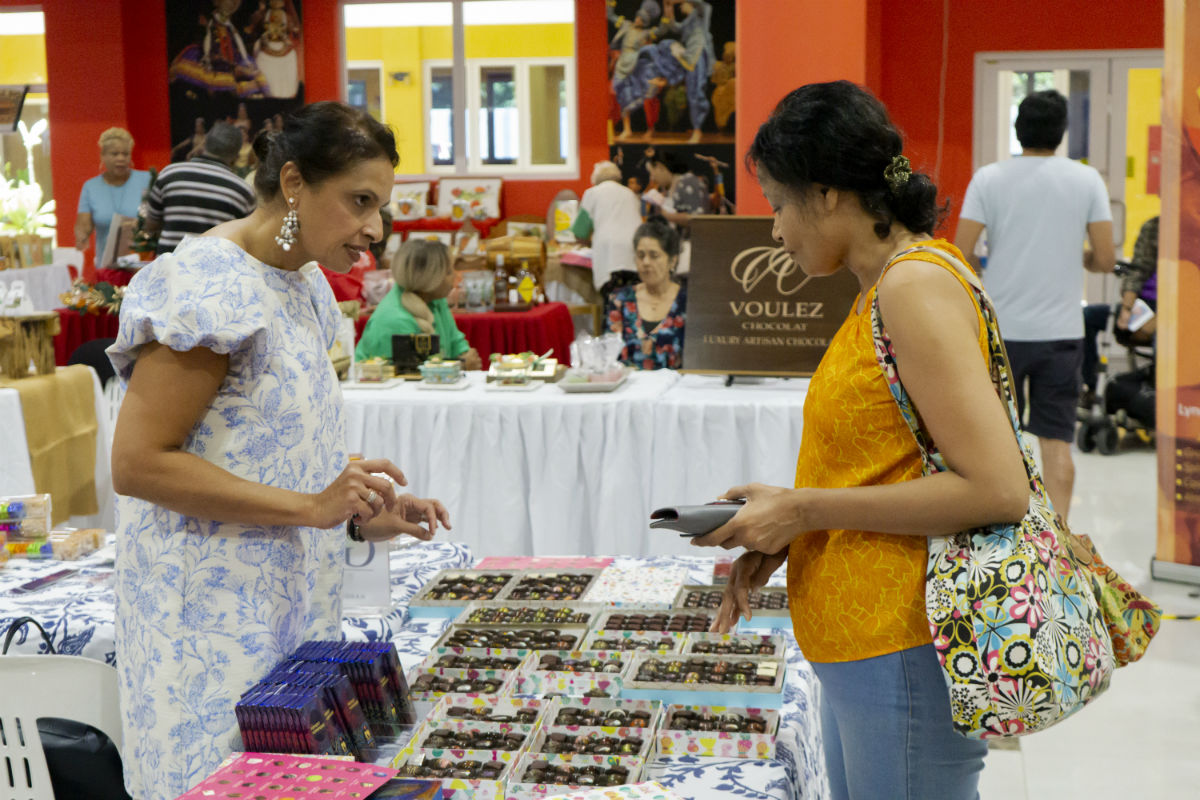
This year, on its opening day, WCCD hosted over 1,200 students from 22 schools. The IFCIC, with its one-of-a-kind fingerprinting and DNA technology, was overrun with visitors. Professor Umaharan hopes that involving the youth will lead to interest in the cocoa industry. Like much of the food and agriculture sector, cocoa has had little growth. In fact, the government’s removal of the Cocoa and Coffee Industry Board between 2014 and 2016 temporarily prevented its extinction after production dropped from 2,800 tonnes to 500 tonnes between 2000 and 2010.
“Without investment, the [farming] industry has not grown,” says Prof Umaharan. “We have kept it from dying out, but it has not grown.”
Even as production has remained consistent at an average of 500 tonnes per year, local chocolatiers reported inability to access cocoa beans in 2022 due to a shortage.
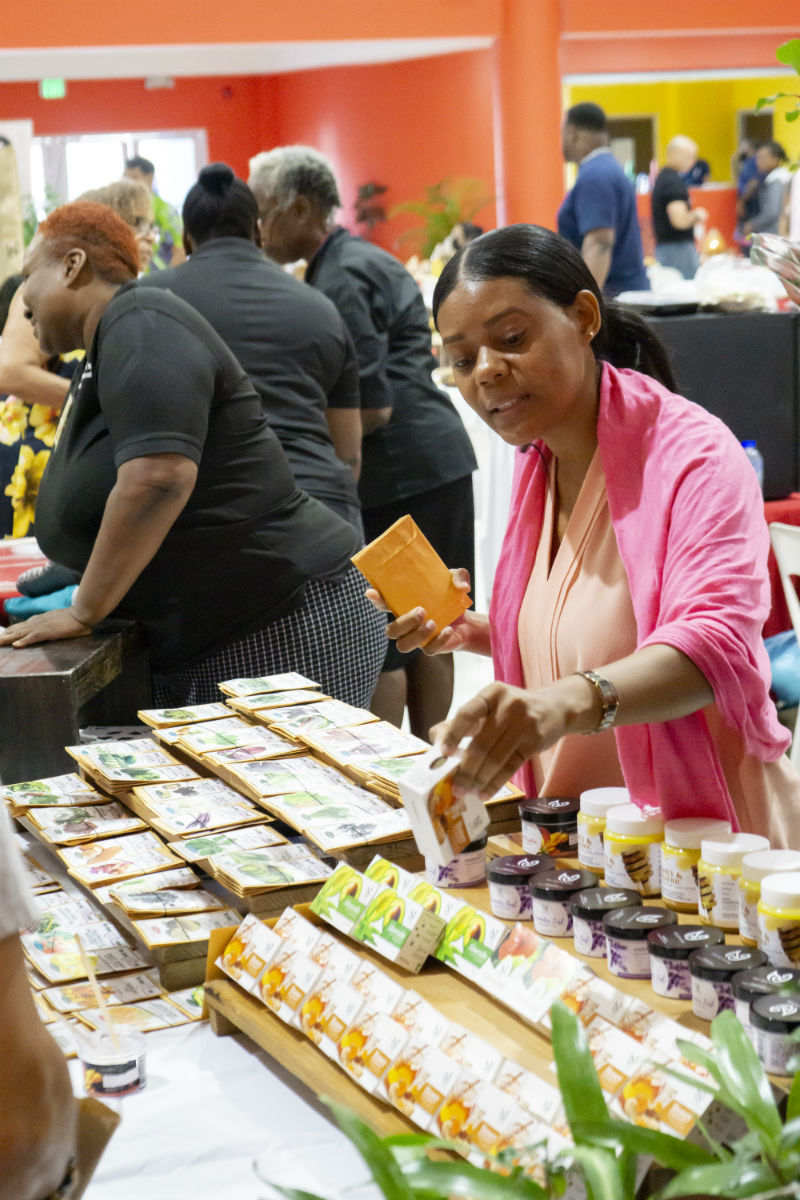
The CRC, however, continues to work around the clock. On the second day of the WCCD, they held the Innovation in Chocolate Cuisine (IICC) competition. Judged by former IICC winners Chef Samara Lezama, Chef Mary, and Kerry Ann Deo, the competition rewards the top three most innovative uses of chocolate/cocoa in cuisine.
Although the value-added chocolate industry has grown in “leaps and bounds” from zero chocolatiers in 2010 to 50-60 in 2023, the entire industry still faces many challenges, from the age of our cocoa trees which reduces yield to the outdated farming practices to, worst of all, the lack of capital.
T&T, however, still has competitive advantages in cocoa. The global cocoa industry is marred with unsustainable social and environmental practices, like the use of child labour and the clearing of protected land to grow cocoa. Our industry is not tainted by these practices. Our farmers earn a living wage; there are fair labour practices; and cocoa provides carbon capture, watershed management, soil conservation, slope stabilisation, and food security as it is grown with other food crops.
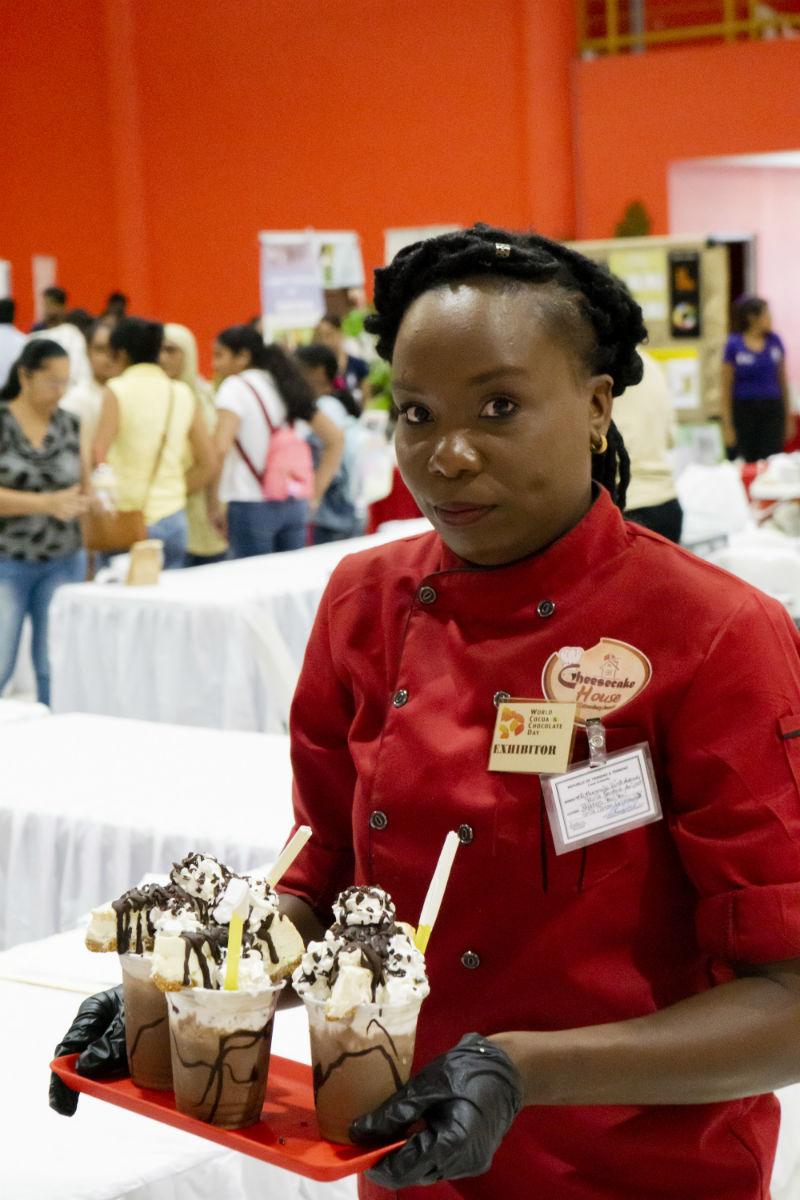
Those advantages, as well as the value of our cocoa itself, has helped T&T procure research investments from the likes of Mars Wrigley, Mondelez International, and Cargill.
Professor Umaharan says, “Most countries in the world recognise us as the Noah’s Ark for cocoa,” highlighting that our international cocoa gene bank is the largest collection of cocoa varieties in the world.
He adds, “We have a lot going for us”, but we need an industry to propel us forward.
The Cocoa Research Centre wishes to acknowledge the support of the Mahatma Gandhi Institute for Cultural Cooperation, gold sponsor National Flour Mills, and bronze sponsor ExporTT in making the World Cocoa and Chocolate Expo 2023 a success.